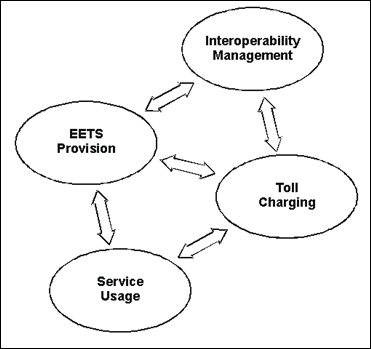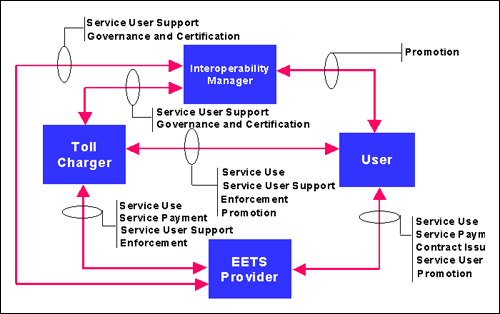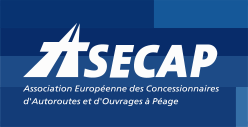The CESARE project
Description of the CESARE project
CESARE (Common Electronic Fee Collection System for an ASECAP Road Tolling European Service) is a project set up by ASECAP with the intention of specifying, designing, developing, promoting and implementing a common interoperable Electronic Fee Collection System (EFC) on European toll roads.
The objective is allowing European users to travel through the overall network and pay for tolls with a unique technical and contractual means, obtained by signing a contract with one of the possible providers, under an agreement signed by toll road operators referred to as Memorandum of Understanding.
Users will have a unique interface to the service, referred to as payment mean issuer, providing a contractual and a technical instrument (the on-board terminal) to access the service.
The user shall be able to use such instrument throughout the network, receiving then a periodical statement of the transits performed and an invoice from the same issuer, which will charge him on behalf of all operators.Electronic fee collection interoperability is characterised by the following three aspects:
- Technical interoperability, intended as a standardisation of the technical characteristics of both the roadside and the on-board equipment;
- Operational interoperability, intended as the standardisation of all procedures involved by the toll payment through an electronic means, from the distribution to the use of the on-board terminal, from the charging of the user to the crediting of transport service operators;
- Contractual interoperability, intended as the establishment of a contractual instrument binding signatory parties to provide a service to users along a standardised behaviour.
- Phase I: Service definition, technical and operational interoperability
- Phase II: Contractual interoperability and feasibility validation
- Phase III: Tenders and system implementation
- Phase IV: Service roll-out
Phase I closed by the end of 1999 with the result of achieving the basic definition of the technical and of the operational interoperability.Phase II started in the year 2001 and ended in February 2002. This second phase touched the different interoperability levels (technical, procedural and contractual) and provided a whole framework for interoperability of the EFC systems based on DSRC (Dedicated Short-Range Communications). The main achievements of Phase II are the following:
- Provision of a Memorandum of Understanding (MoU) that defines the behaviour to be respected by all actors involved;
- Definition of an EFC transaction model and the technical specifications for the equipment needed to perform it;
- Investigation of the compatibility between the ASECAP designs and the requirements of non-ASECAP countries interested in EFC.
CESARE Phase III started in April 2005 and was succesfully achieved in September 2006.
CESARE III’s main objective was to study the modifications made to the contractual and organisational set of documents drawn up in phase II. This needed to take into account the new actors, which for the first time included countries which have confirmed their participation in a national road toll system, road toll in urban areas and the EFC European directive.
The project was made up of 7 Work Packages, 5 of which being of technical nature and the remaining 2 being dissemination and project management.
The total budget of the CESARE project amounted to 1,4 M€ and is co-financed by the European Commission/DG TREN.
Taking into account the newly defined model, the project has then given a new, more detailed description of its relevant Service Components:
Fig. 1: CESARE EETS model
Taking into account the newly defined model, the project has then given a new, more detailed description of its relevant Service Components:
Fig. 2: Roles and service components
CESARE III proved that the interoperability objectives can become a reality in Europe, if a genuine and substantial co-operation between the public and the private sector is insured.Member States who have not yet implemented an EETS, based on the approach set out by CESARE III, are advised to establish a national implementation plan facilitating the transition of the EETS obligations, while respecting the open-market requirements of the treaty.
The European Commission, the European Parliament and the EU Member States are invited to cooperate with the road charging industry and to establish an interoperable EETS, functionning in a coordinated way at the European level, while allowing Member States to fasten the pace of their national implementation plans for EETS.
FURTHER INFORMATION:
BACK TO CESARE IV



 Theme:Acting to change driver's behaviour to reach vision...
Theme:Acting to change driver's behaviour to reach vision... The 51st ASECAP Study & Information Days will be held on 13-15 May...
The 51st ASECAP Study & Information Days will be held on 13-15 May...